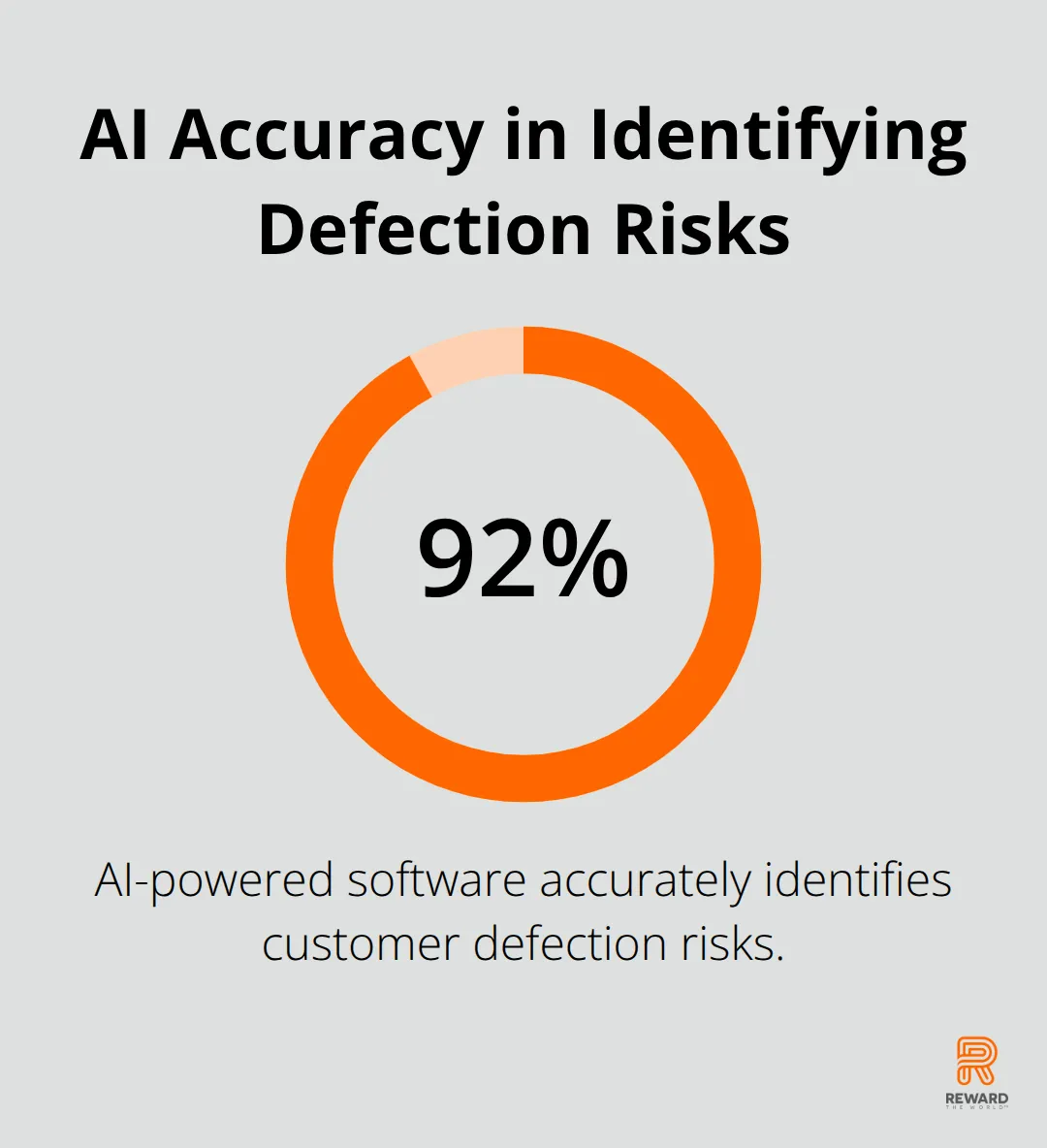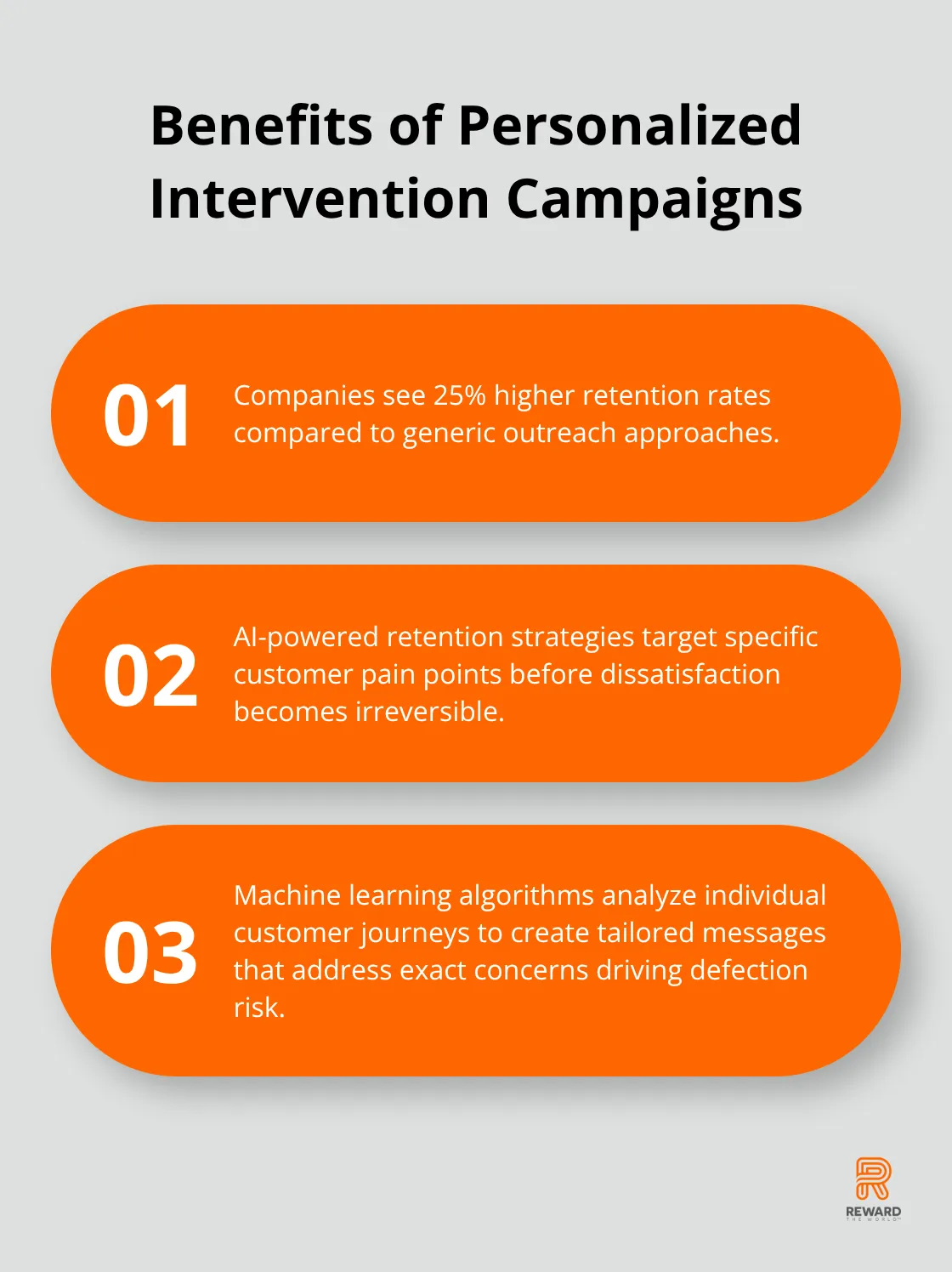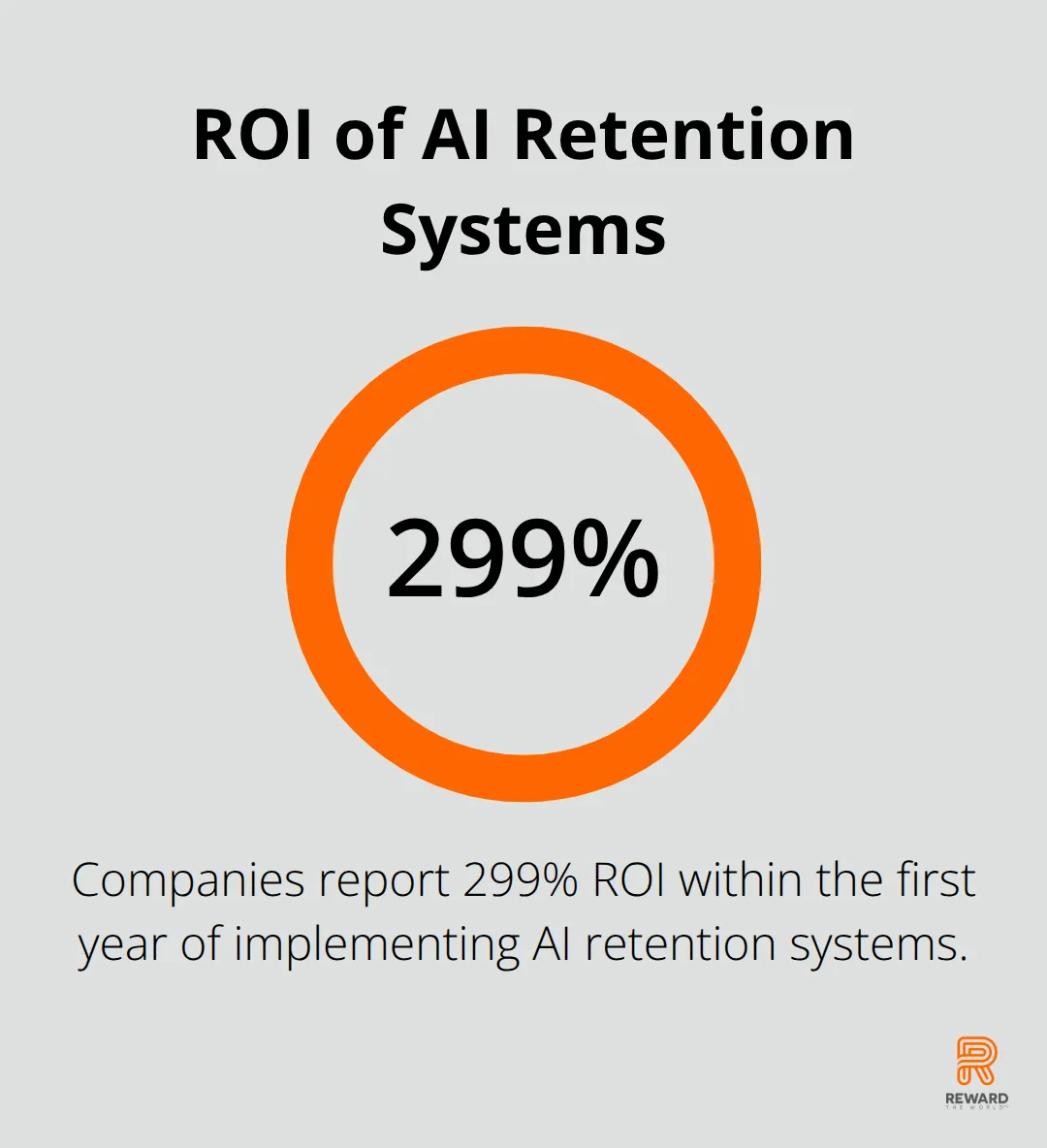Customer churn costs businesses $75 billion annually in the US alone. Traditional reactive approaches fail when customers have already decided to leave.
AI changes this game completely. We at Reward the World use predictive incentives to identify at-risk customers weeks before they churn, giving businesses the power to act proactively and save valuable relationships.
Which Patterns Signal Customer Defection
AI transforms customer retention through pattern recognition that human analysis cannot match. Predictive models analyze transaction frequency, engagement metrics, and support ticket patterns to identify defection risks with 92% accuracy for businesses investing in AI-powered software. Companies that implement these systems report up to 30% reduction in churn rates when they act on early warning signals.

Transaction Behavior Changes
Payment delays, decreased purchase frequency, and smaller order values indicate growing dissatisfaction. AI systems track spending patterns and flag customers who show significant reductions in transaction volume over extended periods. Netflix leverages this approach to identify subscribers who reduce viewing time, while Amazon monitors cart abandonment rates and purchase intervals. Machine learning algorithms detect subtle shifts in buying behavior that precede cancellation decisions (typically 6-8 weeks before customers leave).
Engagement Drop-Off Signals
Login frequency, email open rates, and feature usage patterns reveal customer disengagement. AI monitors app usage that declines 50% over monthly periods, website visit reductions, and decreased response rates to communications. Support ticket volume increases often coincide with engagement drops, which creates compound risk indicators that demand immediate attention.
Communication Pattern Shifts
Customer service interactions change dramatically before defection occurs. AI tracks response time delays, negative sentiment in communications, and increased complaint frequency. These communication shifts provide clear intervention opportunities for retention teams to address customer concerns before they escalate to cancellation decisions.
The next step involves translating these warning signals into targeted retention strategies that address specific customer pain points.
How AI Stops Customers from Leaving
AI-powered retention strategies work because they target specific customer pain points before dissatisfaction becomes irreversible. Companies that implement personalized intervention campaigns see 25% higher retention rates compared to generic outreach approaches. Machine learning algorithms analyze individual customer journeys to create tailored messages that address exact concerns that drive defection risk. Spotify uses this approach to recommend personalized playlists for users who show decreased engagement, while Amazon deploys targeted product recommendations based on patterns that indicate purchase hesitation.

Automated Personalization at Scale
Smart segmentation divides at-risk customers into distinct groups based on behavior patterns, purchase history, and engagement levels. AI systems generate personalized email campaigns, app notifications, and special offers that match each segment’s specific needs. Hydrant successfully implemented predictive models to identify high-risk churners and deployed targeted recovery campaigns that improved retention by 15%. Real-time personalization engines adjust message content, timing, and delivery channels based on individual customer preferences and response patterns.
Proactive Support Intervention
AI systems detect frustrated customers through sentiment analysis of support tickets, chat interactions, and social media mentions before they escalate complaints. Automated workflows trigger immediate supervisor notifications when customer satisfaction scores drop below predetermined thresholds. Companies that use proactive support strategies report fewer cancellations because they address issues before customers reach their limits. AI-powered chatbots equipped with natural language processing handle 80% of routine inquiries while they escalate complex problems to human agents with complete context.
Dynamic Reward Optimization
Machine learning algorithms adjust prices, discounts, and loyalty rewards in real-time based on individual churn probability scores. High-risk customers receive immediate incentives while stable customers maintain standard prices. Dynamic models prevent revenue loss because they offer strategic discounts only to customers with genuine defection risk rather than blanket promotions to everyone (which reduces profit margins unnecessarily).
These AI-powered retention strategies require proper implementation frameworks and data infrastructure to deliver maximum impact for businesses.
How Do You Build AI Customer Retention Systems
AI retention systems need three foundational elements that determine success or failure. Companies must establish comprehensive data collection across all customer touchpoints including transaction history, support interactions, website behavior, and communication preferences. Businesses need at least 12 months of historical data to train accurate predictive models, though Gartner research shows systems with 24 months of data achieve 15% higher prediction accuracy. Integration challenges arise when customer data exists in separate systems like CRM platforms, payment processors, and support tools, which requires robust APIs and data warehouses to create unified customer profiles.
Data Infrastructure That Works
Successful implementations connect multiple data sources through automated pipelines that update customer risk scores in real-time. Netflix processes large volumes of temporal event data through their data infrastructure to power retention algorithms, while Amazon integrates purchase data, patterns, and review sentiment across 300 million active customers. Companies must implement data quality controls because predictive models fail when fed incomplete or inconsistent information. Clean data pipelines reduce false positives in churn predictions by 40% (according to McKinsey analysis).
Platform Selection Strategy
Choose AI platforms based on integration capabilities rather than advanced features you will not use immediately. Salesforce Einstein and HubSpot offer pre-built retention models for businesses with existing CRM systems, while specialized platforms like Klaviyo excel at email-based retention campaigns. Avoid custom solutions unless you have dedicated data science teams because third-party platforms reduce implementation time from 12 months to 6 weeks.
ROI Measurement Framework
Track three metrics that matter most: churn rate reduction, customer lifetime value increase, and retention campaign conversion rates. Companies that implement AI retention systems report ROI of 299% within the first year according to Forrester research. Measure monthly cohort retention rates before and after AI implementation to isolate the technology’s impact from seasonal variations. Set up attribution tracking to identify which AI-triggered interventions generate the highest customer recovery rates, then optimize budget allocation toward the most effective retention channels.

Final Thoughts
AI-powered churn prevention delivers measurable results that transform customer retention economics. Companies that implement these systems achieve 30% churn reduction while they generate 299% ROI within twelve months. The technology identifies at-risk customers with 92% accuracy and gives businesses weeks to intervene before defection occurs.
The future of customer retention centers on real-time predictive incentives that adapt to individual behavior patterns. Machine learning algorithms will become more sophisticated at detection of subtle engagement shifts, while automated personalization scales to millions of customers simultaneously. Integration between AI platforms and reward systems will streamline retention workflows (making immediate intervention possible when customers show defection signals).
Start your AI retention journey when you audit existing customer data sources and identify integration gaps. Choose platforms that connect with your current systems rather than require complete infrastructure overhauls. Reward the World offers instant reward delivery across 60 million options, which makes it ideal for AI-triggered retention campaigns that need immediate customer impact.
